I’m answering all your questions about whole grains! From soaking to storing to cooking and nutrition, here’s everything you need to know about different types of grains.
You probably know, if you’ve read KERF for any period of time, that I am a whole grain enthusiast. My love for oats runs deep. And having previously owned a whole grain bakery, I’m no stranger to whole wheat either!
I definitely don’t discriminate against bread, or any whole grain for that matter.
As a Registered Dietitian, I support eating whole grains as one of a variety of colorful food groups (unless of course, it’s unadvised per your doctor). They’re full of good-for-you nutrients like B vitamins, antioxidants, fiber, and protein.
Eating the whole grain is key:
- Bran. This is the outer shell of the grain that provides fiber, minerals, and antioxidants.
- Endosperm. The middle layer of the grain is mostly made up of carbs.
- Germ. This inner layer has vitamins and minerals and the protein.
The Different Types of Grains
Below you’ll find an overview of the different types of grains and, more specially, how to store and cook them.
Here’s a digestible guide to grains : )
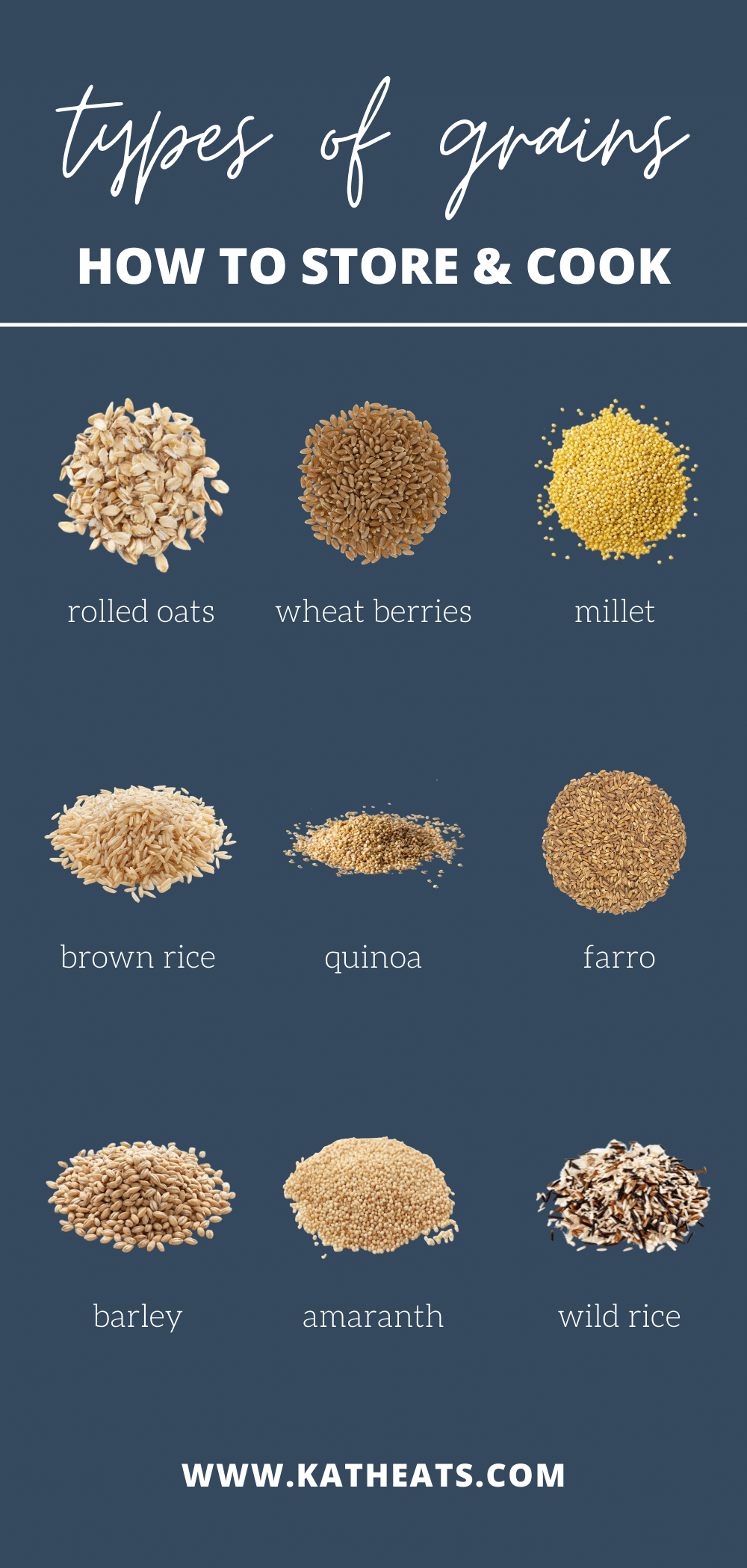
Grains are the edible seeds of grasses
Grains, commonly referred to as ‘cereals’ or ‘cereal grains’, are the edible seeds of specific grasses.
There are a number of different types of grains found within the true cereal grains which are from the botanical family ‘Poaceae’ including wheat, oats, rice, corn (maize), barley, sorghum, rye, and millet. Within these groups there are also varieties such as farro, freekeh, and spelt which are all types of wheat as well as new grains like triticale which is a mixture of wheat and rye.
What are pseudo-cereal grains?
The ‘pseudo-cereal’ group are not part of the same botanical family, in which ‘true’ grains belong, however they are nutritionally similar and used in similar ways to ‘true’ grains. Many of these, such as amaranth, buckwheat and quinoa, are not actually grains but are seeds from a number of different plant species external to the Poaceae family.
Pseudo-cereals are increasingly being used in breads, flatbreads, crispbreads, pasta, breakfast cereals and snack bars as well as on their own as alternatives to rice, pasta and cous cous. source
Grain FAQs
How To Shop For Grains
You can purchase most grains in their raw, whole form from reputable brands such as Bob’s Red Mill or Whole Foods 365. My favorite way to shop for them is the bulk bins of stores so I can only get that amount I need (especially when cooking with something I don’t use often.) I recommend purchasing only what you need for a month or so, so they don’t go bad. See below for storing tips.
How To Store Grains
Raw: Store grains in glass jars in a cool, dark place. Dry grains will last for approximately 3 months in a pantry, 6 months in a refrigerator, and 1 year in a freezer.
Cooked: Store cooked grains in a tightly sealed container in the refrigerator for 3-5 days.
How to Soak Grains
- Rinse grains first to remove any dirt or dust (except oats).
- Soak: place grains in a glass or ceramic bowl. Cover with warm water. Add 2 Tbsp. of a neutralizer* for every cup of grain. Soak at room temperature.
*What’s a neutralizer?
- Non-dairy: lemon juice, raw apple cider vinegar, baking soda
- Dairy: plain whole milk yogurt, cultured buttermilk, kefir, liquid whey
Why soak grains?
Soaking grains with a neutralizer before cooking makes them easier on the digestive system, the nutrients easier to absorb, and shortens cooking time.
Always rinse your grains before cooking, even if not soaking.
How To Cook Grains
1. Boil: place grains in pot with boiling water (or broth for added nutrition).
2. Season: Add a pinch of salt for flavor.
3. Simmer: Cover the pot, reduce heat to a simmer, and cook until done (cooking times vary for different grains).
4. Don’t Stir: Do not stir the grains while cooking as this allows the cooking water to evaporate too quickly, making them mushy.
Cooking Appliances: We use our rice cooker or Instantpot the most for cooking grains.
Whole Grain Nutrition
Whole grains deliver many key nutrients.
- Fiber: The bran provides most of the fiber in whole grains.
- Vitamins: Whole grains are particularly high in B vitamins, including niacin, thiamine, and folate.
- Minerals: They also contain a good amount of minerals, such as zinc, iron, magnesium, and manganese.
- Protein: Whole grains boast several grams of protein per serving.
- Antioxidants: Many compounds in whole grains act as antioxidants.
- Plant compounds: Whole grains deliver many types of plant compounds that play a role in preventing disease. These include polyphenols, stanols, and sterols. source
What are the health benefits of grains?
Eating whole grains has a slew of health benefits. Some include helping to lower blood pressure, supplying long-lasting energy, and providing essential enzymes, antioxidants, minerals, and fiber.
Here are a few specific ways whole grains support good health:
- Bran and fiber slow the breakdown of starch into glucose—thus maintaining a steady blood sugar rather than causing sharp spikes.
- Fiber helps lower cholesterol as well as move waste through the digestive tract.
- Fiber may also help prevent the formation of small blood clots that can trigger heart attacks or strokes.
- Phytochemicals and essential minerals such as magnesium, selenium and copper found in whole grains may protect against some cancers. source
Grain Quick Tips
- Quinoa is a compete protein with all 8 essential amino acids.
- If you like white rice, try half white & half brown for more nutrients.
- Wild rice is higher in protein and lower in carbohydrates than white or brown rice.
- Instant oatmeal usually has added sugar, so choose whole rolled or steel cut instead.
5 Healthy & Delicious Grain Recipes
1. Greek Salad with Quinoa
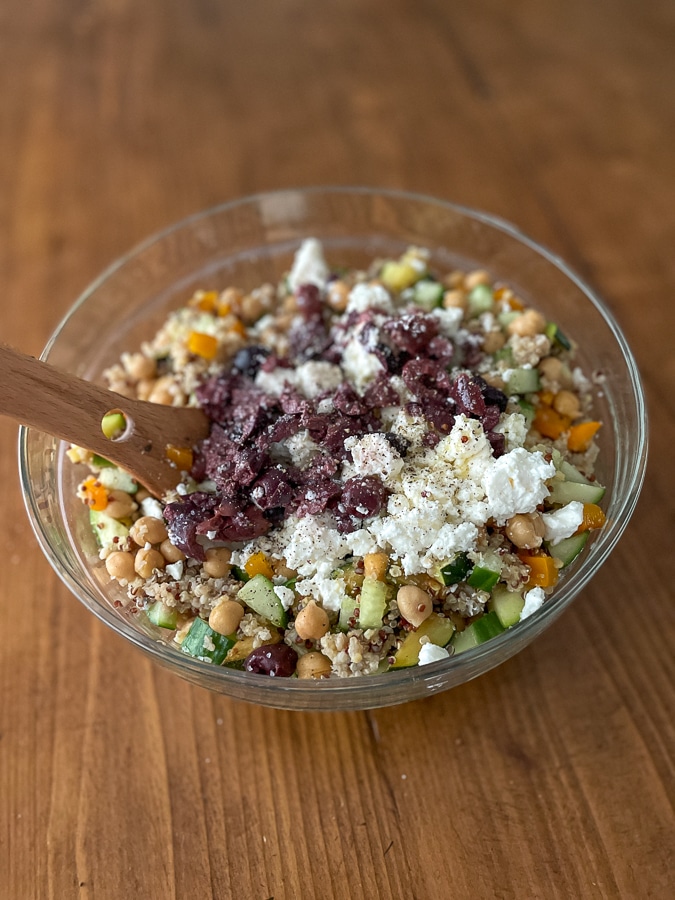
2. Oatmeal Pancake Recipe

3. Spiced Millet Salad
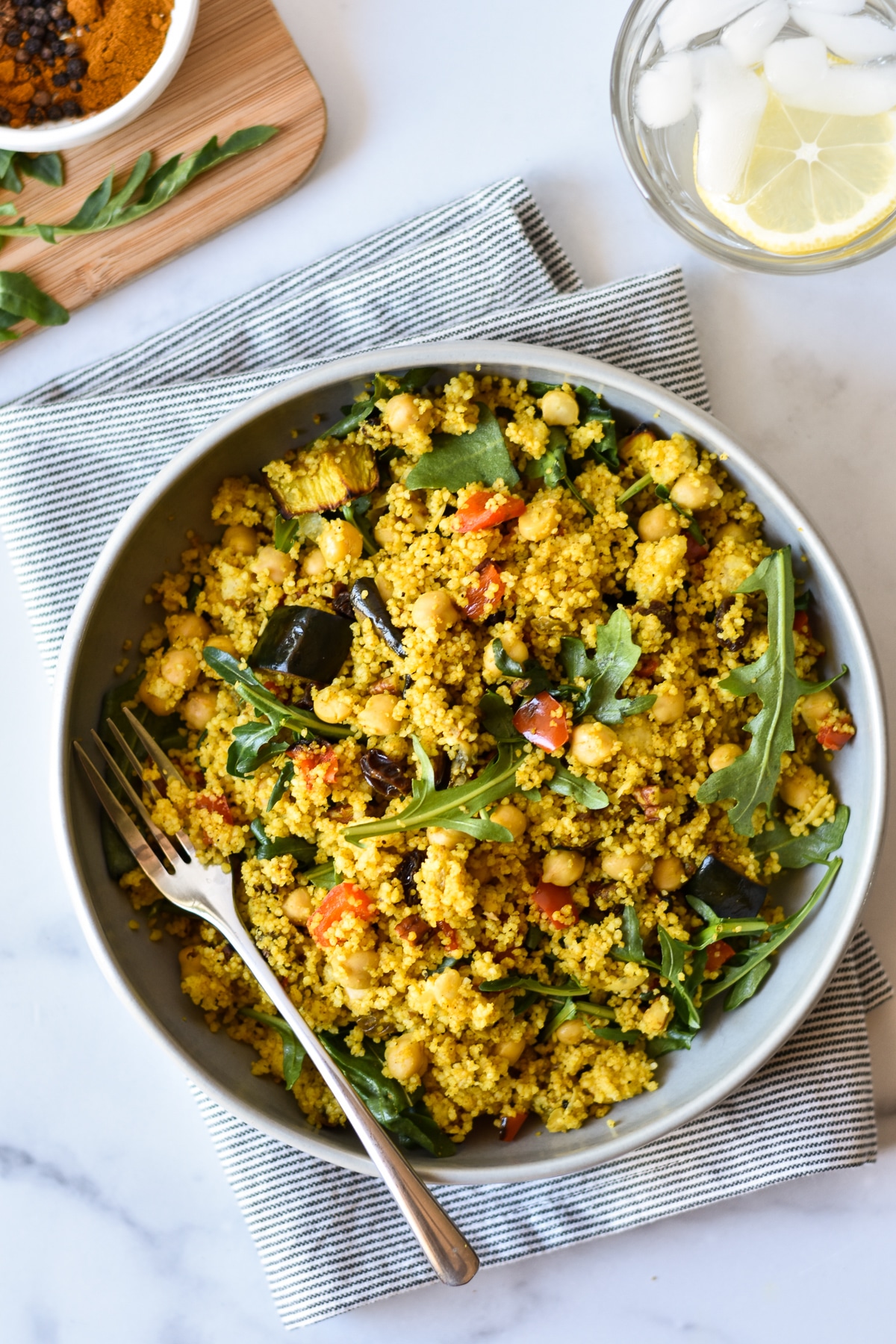
4. Citrus Curry Farro Salad
5. Radicchio and Wheatberry Salad
6. Pumpkin Farro Salad
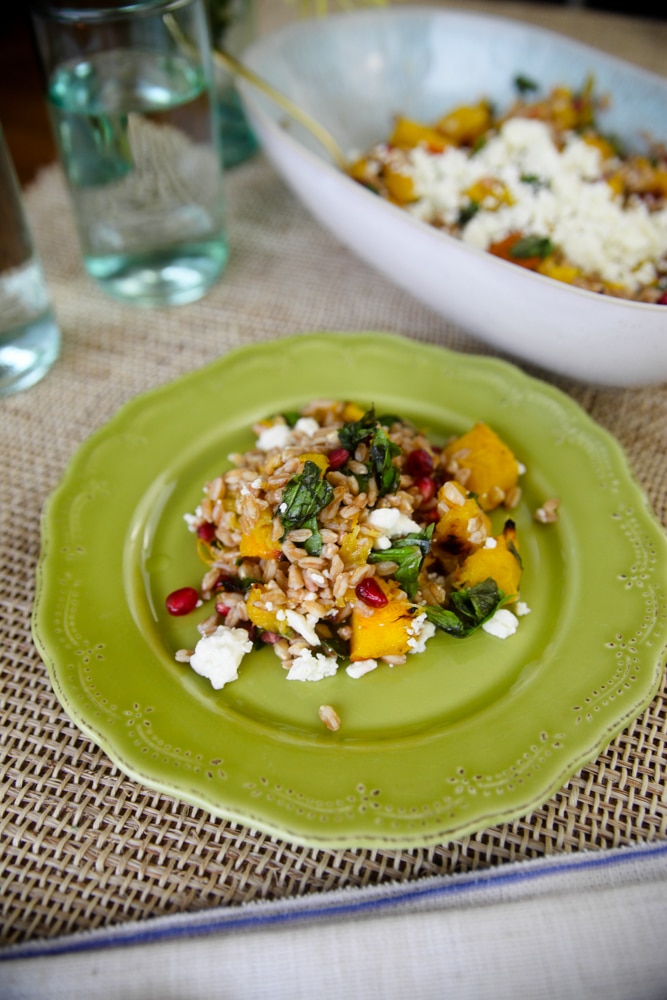
7. Colorful Forbidden Rice Salad
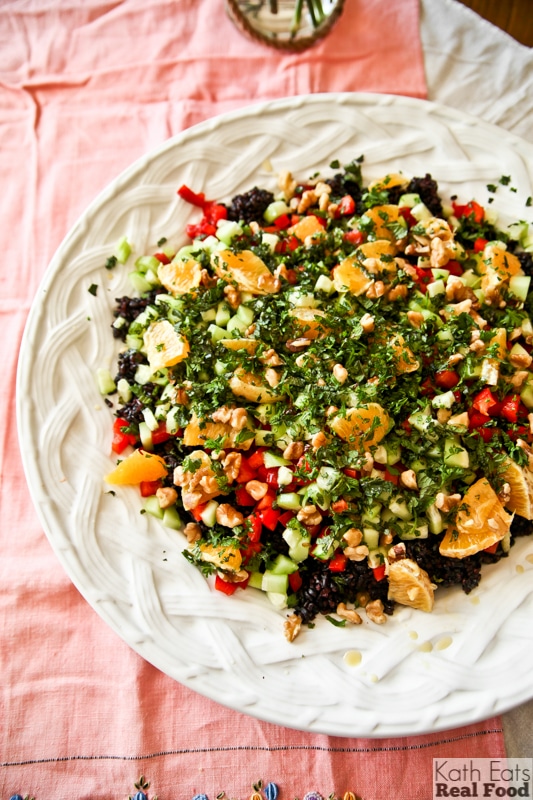


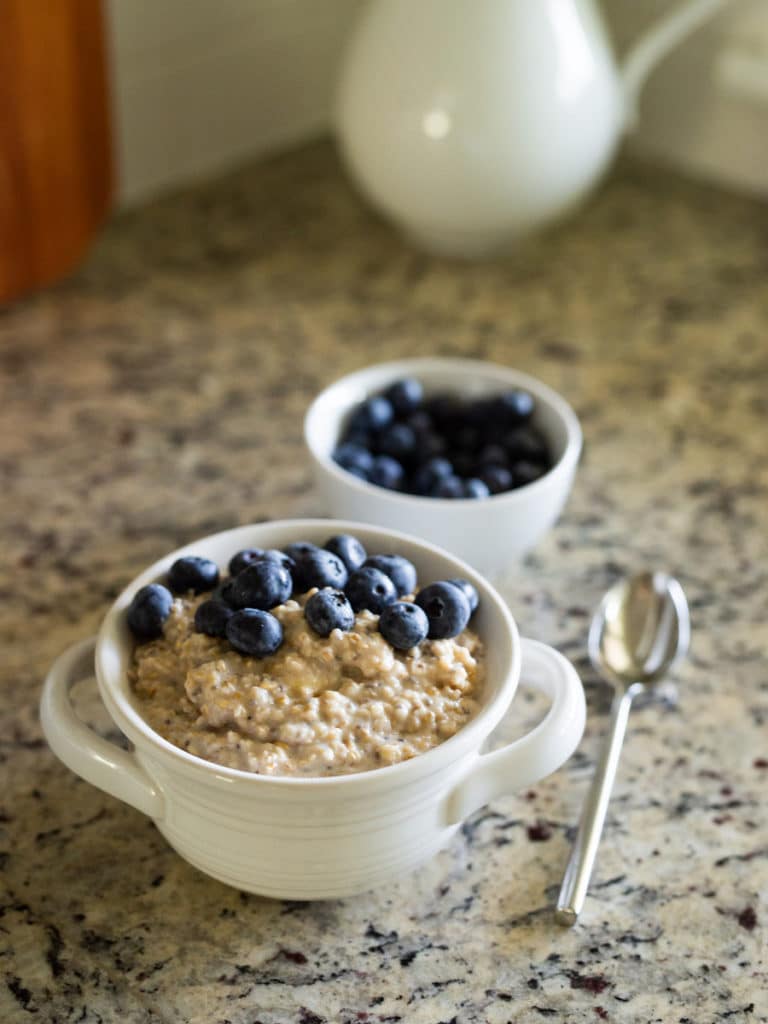
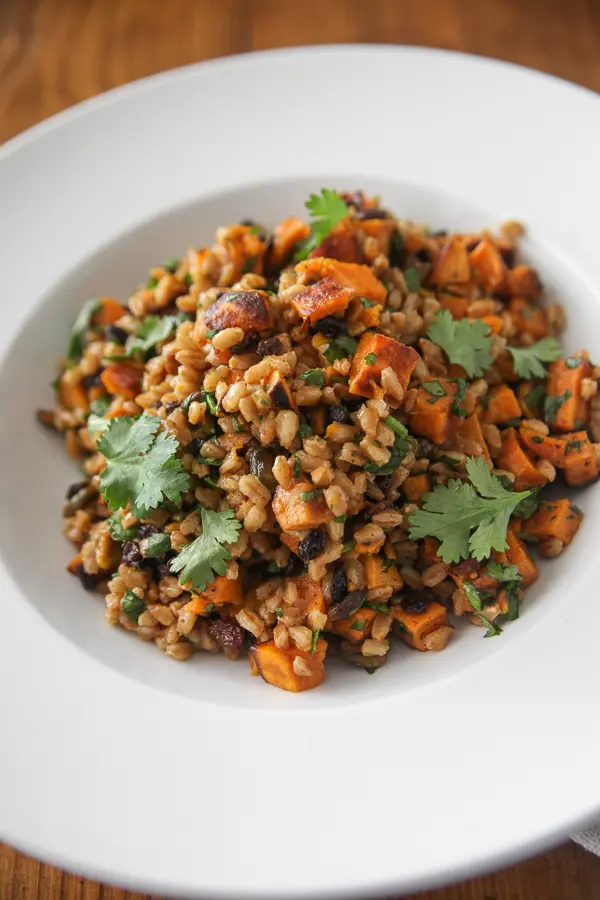
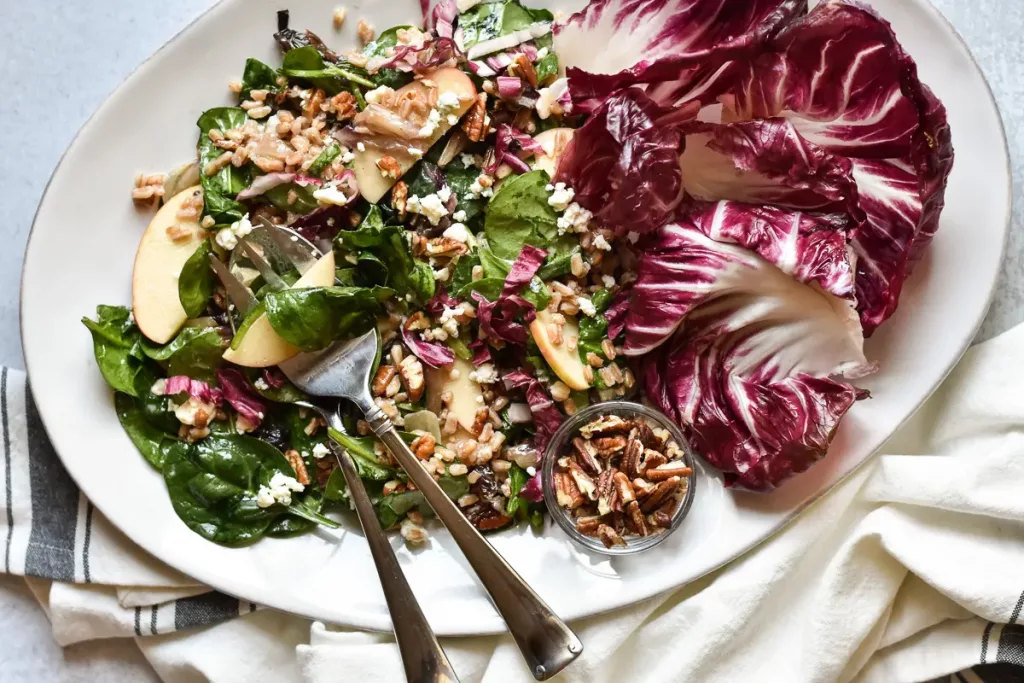
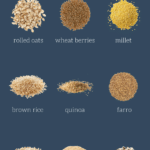
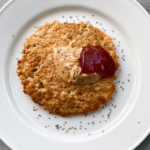
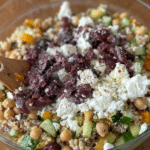
Judy says
What pjs did you post on instagram the other day!?
Kath Younger says
These! https://rstyle.me/cz-n/ftiwbdb5q5f